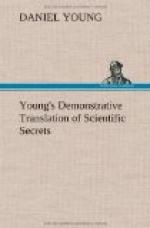262. A good chocolate coloured paint
This is made by the addition of blue black in powder, or lamp-black to receipt No. 261, till the colour is to the painter’s mind; and a lighter brown may be formed by adding ground white lead. By ground lead is meant white lead ground in oil.
263. Yellow paint
This is prepared with yellow ochre in powder, to receipt No. 261, in the same proportion as Spanish brown.
264. Black paint
This is also prepared in the same proportion, as in receipt No. 261, using lamp-black or blue-black, instead of Spanish brown.
265. White paint
Slack a peck of nice, clean, fresh lime in a covered vessel, with water which is boiling hot; when well slacked, strain it well, then add to it 1-1/2 lbs. of finely ground rice; let the rice be boiled to a thin paste, and stirred in while very hot; 1/2 peck of common salt, well dissolved in warm water; 1/2 lb. of clean glue, dissolved in water; and 1/4 lb. of whiting; when well mixed, add 5 gallons of very hot water, then stir well, and let stand a few days well covered. Pit it on hot, and it will stand the weather as well as a good deal of white lead. You may colour this paint to suit your taste, using and stirring in well Spanish brown for a red pink colour. Take common clay finely powdered, and mixed well with Spanish brown for a reddish stone-colour. For yellow colour use yellow ochre if you please, but chrome yellow makes a richer colour and less does. You may make the colours dark or light according to the quantity of colouring matter used.
266. Compound coloured paints
The various colours that may be obtained by the mixture of other colours, are innumerable. I only propose here to give the best and simplest modes of preparing those which are required for use. Compound colours, formed by the union of only two colours, are called by painters virgin tints. The smaller the number of colours of which any compound colour is composed, the purer and the richer it will be. They are prepared as follows:
267. Light grey
This is made by mixing white lead with lamp-black, using more or less of each material, as you wish to obtain a darker or lighter colour.
268. Buff colour
This is made from yellow ochre and white lead.
269. Silver or pearl grey
Mix white lead, indigo, and a very light portion of black, regulating the quantities by the shade you wish to obtain.
270. Flaxen grey
This is obtained by a mixture of white lead and Prussian blue, with a small quantity of lake.
271. Brick colour
This is prepared by mixing yellow ochre, and red lead, with a little white lead.
272. Oak wood colour




